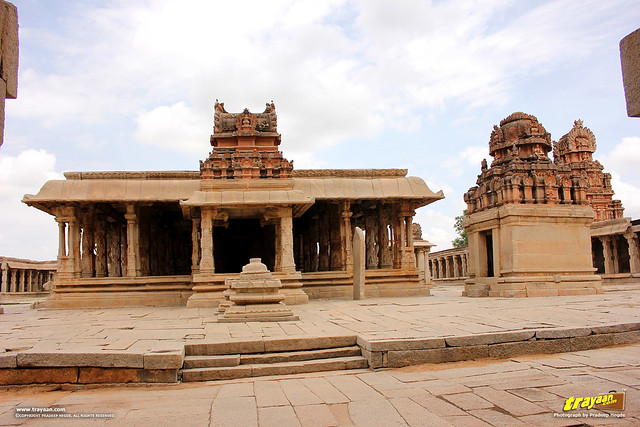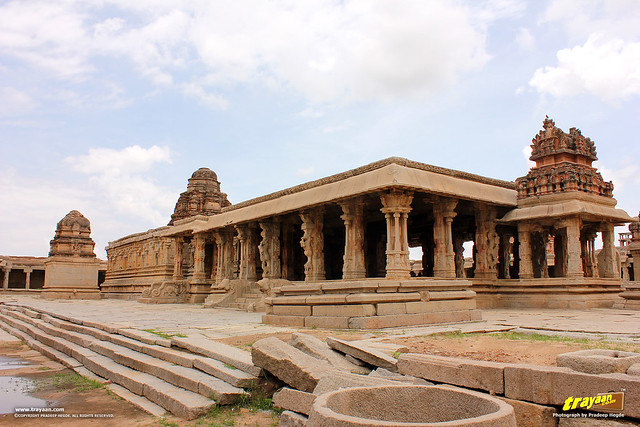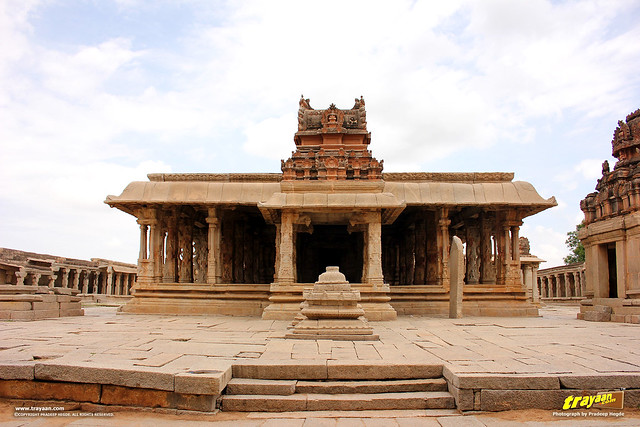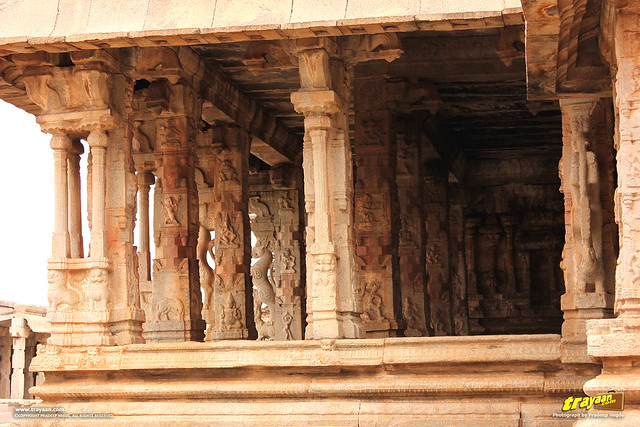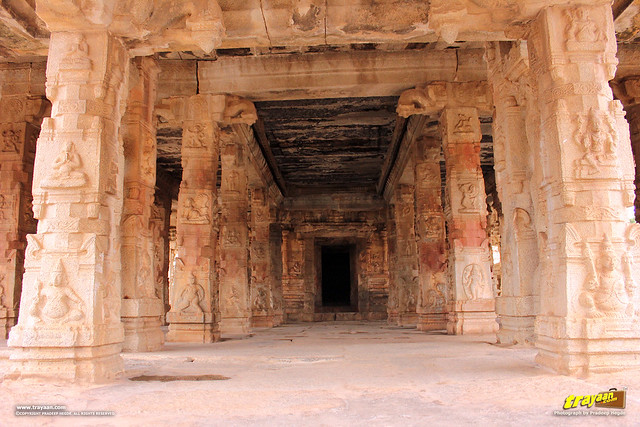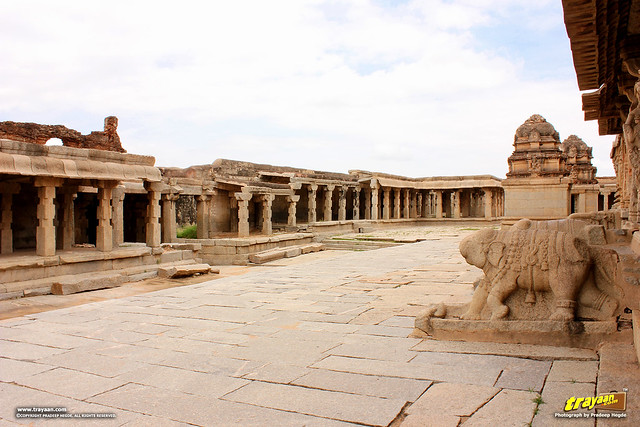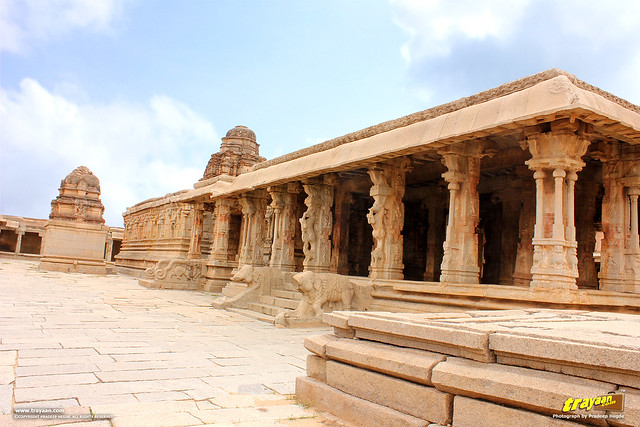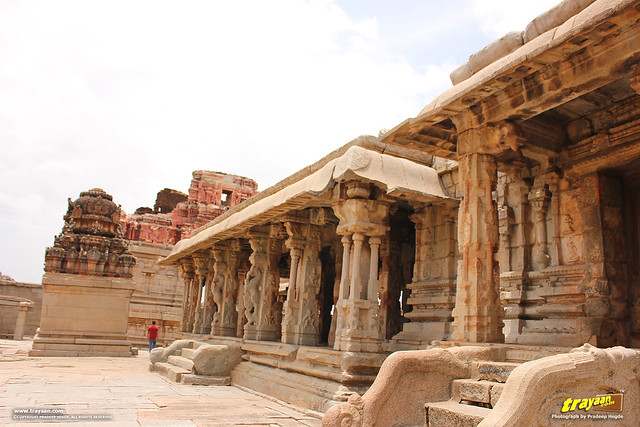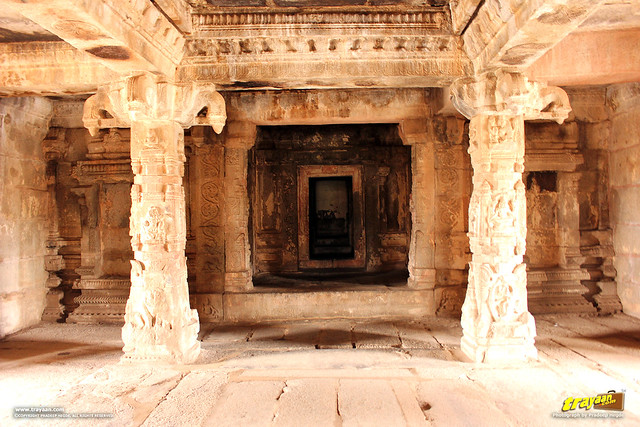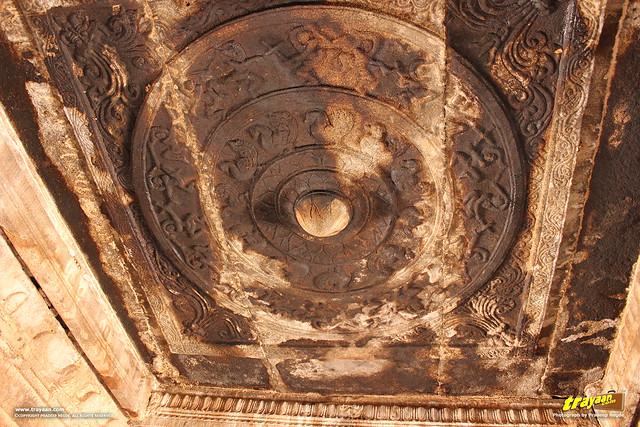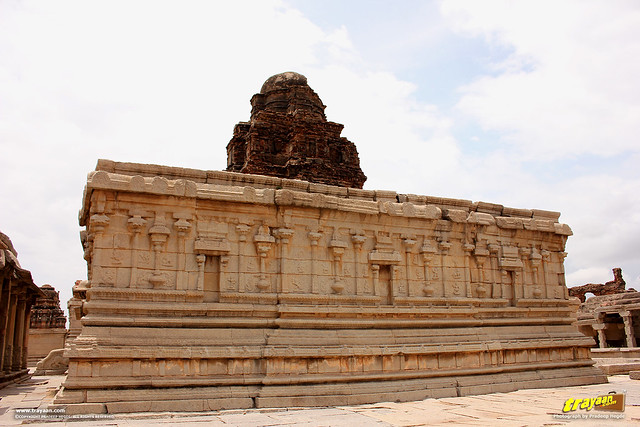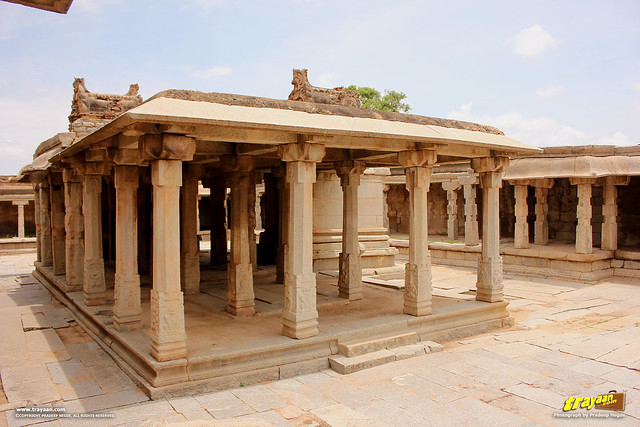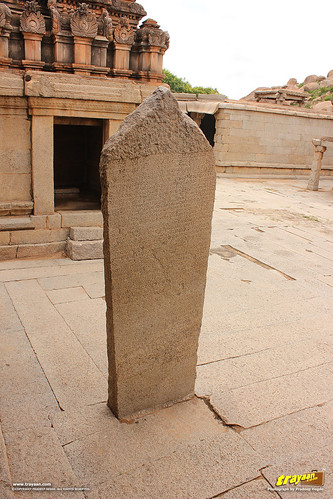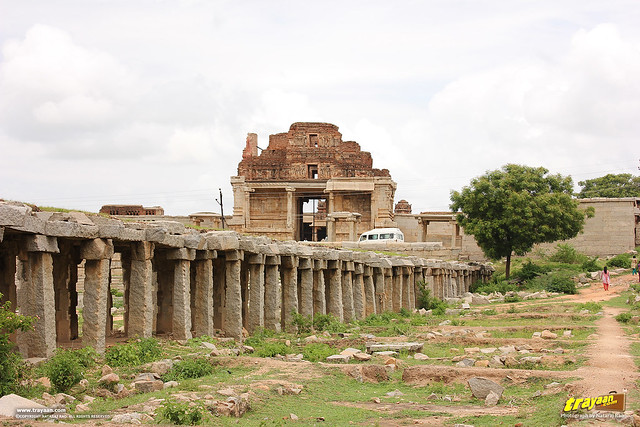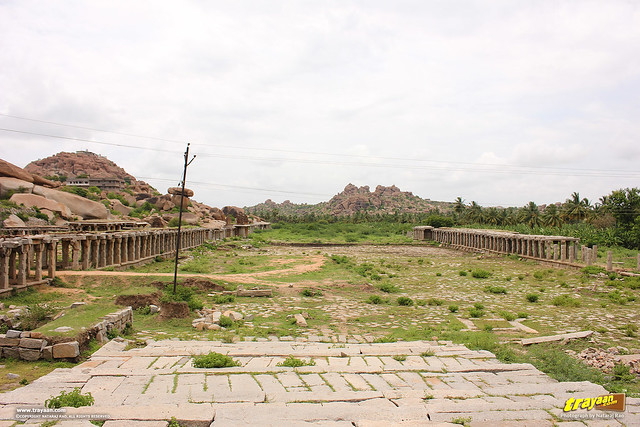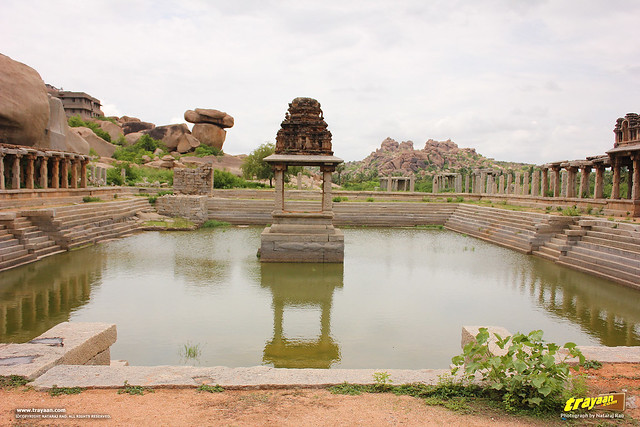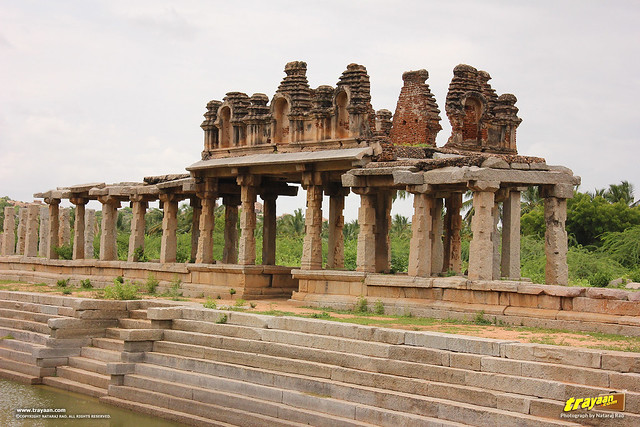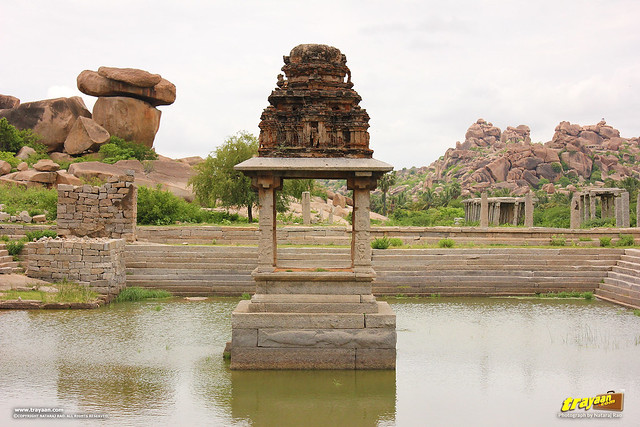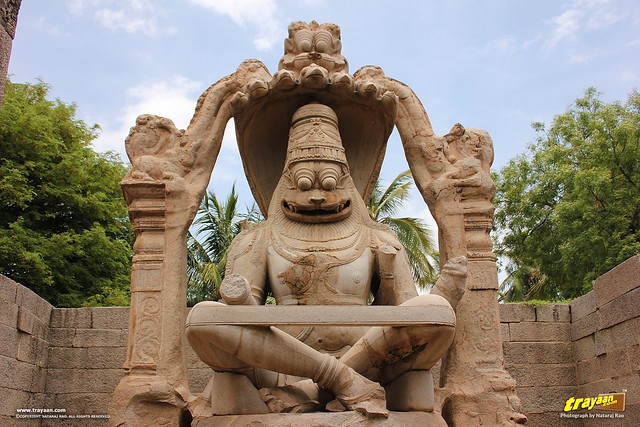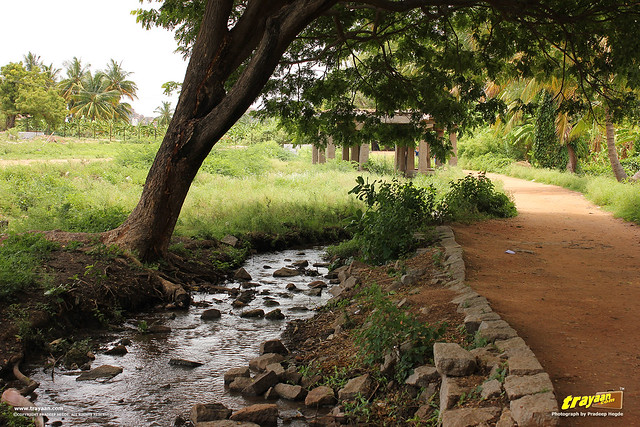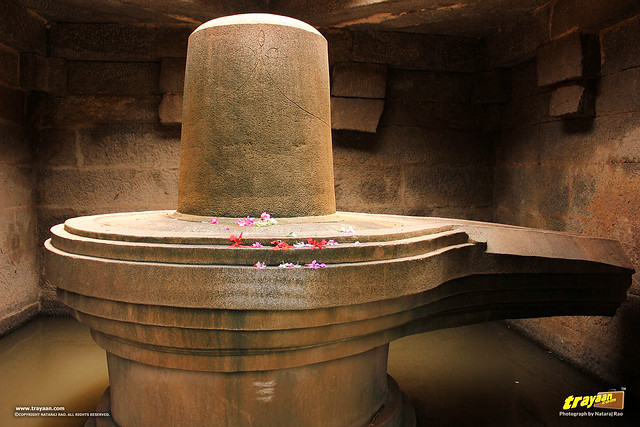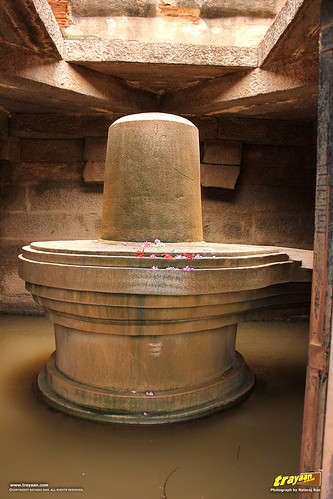Part 2 – Krishna temple, Lakshmi Narasimha monolith and other surrounding monuments at Hampi, a World Heritage site in Karnataka.
Here is the second part of our Hampi travel series, including the famous Krishna temple, Lakshmi Narasimha monolith and Badavilinga monoliths; along with handy maps and tips.Hampi, the famous world heritage site houses the monuments and ruins of the magnificent historical capital city Vijayanagara, (or Vijayanagar) of the empire popularly named after it as the Vijayanagara Empire.
The ruins of Vijayanagar, in Hampi a small village today in Vijayanagara district (carved out of Ballari district, formerly called Bellary), is one of the most visited destinations in Karnataka. Declared as a world heritage site by UNESCO in 1986, these group of monuments spanning an area of about 26 square kilometres, numbering more than thousands of standing and partly ruined structures, exist today as the remains of this glorious and large medieval capital city of India
Jump to:
| Our Hampi Trip (Part 2)
| Krishna Temple, bazaar and Pushkarni
| Lakshmi Narasimha Monolith
| Badavilinga monolith
| Tips for Travellers | Getting There & Transportation | Best times to visit
| Location Map - Places to see in & around Hampi | Get Directions
| Our Hampi Trip (Part 2)
| Krishna Temple, bazaar and Pushkarni
| Lakshmi Narasimha Monolith
| Badavilinga monolith
| Tips for Travellers | Getting There & Transportation | Best times to visit
| Location Map - Places to see in & around Hampi | Get Directions
Our Hampi trip: Part 2
Continuing our Hampi Trip from Part 1, getting down from Hemakuta hill, we had some cool drinks and a bit of rest in the shade. Such was the heat that day in hot and humid month of June. Nearby we could see the ruined towers of Krishna Temple, that's were headed next.
The Krishna temple
The Krishna temple is enclosed by two sets of high compound walls. The small modern road goes into and out of two of the three small entrances of the outer one. This brings you before the ruined gopura, the entrance way to the inner courtyard of the temple on one side and the almost half a kilometre long colonnaded bazaar opposite to it.The temple is abandoned since the fall of Vijayanagara. The idols of the deities aren’t there and there is no active worship here today; it is an abandoned temple just like several other large and small temples of Vijayanagara. It is a protected monument maintained by the ASI just like other World heritage group of monuments here.
This main entrance gopura to the walled courtyard originally featured a high raised tower which now exists in ruined state. Only some bottom portions of this brick and mortar plastered tower exists now over the large and ornate granite entranceway. The metal gate is a modern addition.
The pictures of this main gopura by Alexander Greenlaw in 1856 [1] show it in a ruined state almost like as it stands now. However some restoration has been done as seen in our recent pictures.
Most of the ruins have lost their towers or superstructures above the roof, as they were mainly made out of woodwork and red bricks with limestone mortar and sculptures made of plaster stucco figures, as we can make out of this ruined entrance tower. They are less durable and weaker than their rocky counterparts. Over time they have collapsed and decayed due to weather and negligence, with the granite pathways or gateways beneath left almost intact.
There is no doubt that the ruined tower was once lofty and beautiful, with a typical Dravidian shala roof, a half barrel shaped top section, just like the gopuras of Virupakhsa temple complex. The granite entranceway of the gopura has beautifully carved creeper designs. This kind of designs can also be seen in Veerabhadra swamy temple at Lepakshi which dates to around 1583 CE, long after the fall of this grand city Vijayanagara.
Entering the complex through here, we come to the inner temple courtyard, immediately facing the temple and a small shrine to the right or towards north, surrounded by a colonnaded cloister.
This ornate east facing temple was built in 1513 CE during the reign of king Krishnadevaraya after his successful campaign against the Gajapatis of Orissa. There is a halegannada (old Kannada) stone inscription by Krishnadevaraya dating to 1513 CE in the premises just before the temple, according to which an image of Bala Krishna (Infant Lord Krishna) was brought here from a temple in Udayagiri fort in Andhra Pradesh, during his Orissa campaign and that image was established in this temple.
There are three additional free standing shrines, one towards north just before the temple, as mentioned earlier and as seen in above pictures. Two other shrines are towards south, near the rear side of the temple.
Originally another small shrine existed to the left or southern side also, similar to the one standing right or northern side just before the temple mandapa.
A photo by Alexander Greenlaw in 1856 [2] clearly shows a small shrine with a brick and plaster shikhara above it, on southern side of the mandapa, just before the temple. This shrine is seen partly ruined with walls in a deteriorating condition in the picture, which obviously collapsed later on. This picture was however taken from behind the shrine, with the mandapa seen to the left and the deteriorated inner part of the main east gopura in the background.
This is one of the structures in Hampi that stood in 1856 while Greenlaw photographed, which unfortunately no longer stand.
You can see from the above pictures that unfortunately only the bottom base portion of this shrine exists now. If you consider this shrine which once existed to the left just like the right one, the scene would look more symmetrical with similar shrines on both sides.
The temple features an open pillared hall (a mandapa) which has a small porch on the front, with an ornate shala shikhara superstructure. This superstructure is in good state, and is mostly made of bricks and lime masonry. It features a small half drum barrel shaped ornamentation, which is usually seen at the top of lofty gopuras (entrance towers). Brick and lime stucco parapets were probably adorning the top of the mandapa and the surrounding cloisters as in other temples where they still survive. But now there aren’t any traces of these seen here.
The pillars of typical Vijayanagara style are beautifully carved consisting of figures like Yalis and other bas relief designs of deities. The images of all ten avataras (incarnations) of Lord Vishnu are carved, including that of Kalki, which is depicted here with a horse’s head.
Balustrades of carved elephants and mythical beasts adorn the steps to this mandapa. The cut off trunks of balustrade elephants and some of the yalis on the pillars show signs of mindless vandalism the monument has endured. The balustrades on the opposite north side aren’t even remotely like elephants. They probably are replacements during restorations as elephant balustrades might have been severely mutilated or missing. It is unlikely not to feature symmetrical designed balustrades on both sides.
The temple houses the main sanctum inside the temple building. The inner part of the temple was totally dark and smelly, probably of bats. It would be better if some lights were provided inside. We don’t know whether there were absolutely no electric lights provided here or were they off during that time.
Above the main sanctum of the temple there is an ornate brick and plaster dome like shikhara, typical of mature Vijayanagar style. This shikhara and those above the other sub shrines obviously had metal kalasha pinnacles above them, which aren’t there now.
Interestingly in this shikhara, bricks are seen as the plaster might have weathered during the centuries; whereas the similar styled shikhara above the small north shrine is in very good condition.
The temple enclosure also consists of a free standing open mandapa with a shrine like attachment, both featuring small ornate shala shikhara designs above them.
To the south of this temple enclosure there is another walled enclosure which houses a building made of rocks with plastered walls. The doorways have the distinct Bahamani Islamic styled arches and designs. This can be accessed through the south entrance of the temple’s cloistered corridor.
This is speculated to be a granary [3]. This Indo Islamic style of arches and designs inspired from neighbouring Bahamani architectural style are known to be incorporated in many royal, courtly and administrative structures like palaces and watch towers of Vijayanagara. The Lotus palace, elephant stables, queen’s bath and the watch towers in the royal enclosures that still stand today are a good example.
We then took a walk among the ruined bazaar before the Krishna temple complex. The remains of a bazaar stand opposite to the temple complex, across the narrow modern road; this is known now as the Krishna temple bazaar. The ruins of this colonnaded bazaar extend upto at least half a kilometer along the wide “car street”, similar to that before the Virupaksha temple.
Adjacent to this bazaar, stands a pushkarni, a sacred water tank.
This small pushkarni, or a sacred stepped pond features a small shrine with an ornate dome like shikhara superstructure made of brick and mortar with plaster sculptures. As usual the bricks are seen with the plaster weathered during the centuries. This empty shrine is said to be the place where the utsava murthy (festival image of the deity) was kept during the festivals.
From here, we headed next to the iconic monolith of Hampi, the Lakshmi Narasimha statue. This is nearby the Krishna temple.
The Lakshmi Narasimha Monolith
One of the finest Vijayanagara monoliths, the Lakshmi Narasimha statue stands 6.7 meters tall (~ 21 feet). Narasimha is the fourth incarnation, the man-lion form of Lord Vishnu, one of his 10 avataras (incarnations) according to the puranas. This beautiful iconic monolith was consecrated by Krishna Bhatta during Krishnadevaraya’s reign in 1528 CE, according to nearby inscriptions.The monolith sits with folded legs, inside a small roofless shrine surrounding it. It probably had a roof before; perhaps made of woodwork, as the statue might not have been originally kept open this way, however this is just our speculation.
Here Narasimha is depicted seated on Adi shesha the sacred guardian serpent of Lord Vishnu, which rears over Narasimha’s head with its large seven headed hood. The whole statue along with the snake and ornamentation part was originally carved out of a single rock.
This beautiful statue was partially ruined with a damaged face with broken nose and upper lip, some pieces chipped off from chest, broken arms and legs, which are evident from John Gollings’ photograph of the statue, taken in around 1984. [4] The picture also shows a partially ruined Kirtimukha, the one that looks like a lion or a demon face, that is above the snake’s hood on the ornamentation part of the monolith. These damages to the monolith were probably due to mindless vandalism along with weathering.
This monolithic statue was initially confused to be that of Ugra Narasimha (Fierce Narasimha) due to the missing image of Lakshmi sitting on the left lap which was damaged. The statue is originally said to feature four arms, of which all are broken. The face, broken legs, chipped pieces on the chest and the Kirtimukha above the snake’s hood were obviously restored at some point of time, along with a horizontal strip across the legs which is said to have been added to keep the legs in place.
Badavilinga Shrine
Just near to the Lakshmi Narasimha monolith is a small shrine with a large monolithic shivalinga nearly 3 metres tall (~ 9 feet). The shrine is made of stone, with a deteriorated brick and mortar shikhara. This monolith is referred as Badavilinga, as it is believed to be consecrated by a poor woman. The base of the statue is immersed in water that fills the shrine floor which is much lower than the ground level. The water is said to be due to a water channel of local irrigational activities according to nearby ASI signboard.From here we headed towards the underground Shiva temple and the Zenana enclosure with Lotus mahal and elephant stables. We will return with these and other wonderful World Heritage monuments of Vijayanagara in Hampi, in the next part of our Trip.
» Continued in Trip to Hampi – Part 3
ALSO SEE
Tips for travellers
- All monuments open from Dawn to dusk (Sunrise to Sunset).
- There is no entry fee for any monuments mentioned in the above post Hampi trip Part 2.
- Beware of the monkeys here, especially on the hills. Avoid them. They are known to snatch away your things and can get quite obnoxious.
- You can have a quick look around the significant monuments and places in a day. You need at least two days to have a good look at all those worth seeing here. We made a nice and handy map for you marking most of the things to help you plan and navigate you trip. (Refer to the awesome map below)
Getting there and getting around: Transportation
Hospet town, just ~14kms away from Hampi village is well connected with roadways and railways; with buses from all major places in Karnataka and trains that come from Bangalore, Mysore or Hubli. KSRTC provides sleepers and Volvo buses to Hospet from Bangalore. Hubli is the nearest airhead. Once accommodated in Hospet, you can hire a cab to Hampi which you can enquire your hotel if they can arrange one. There are two wheelers available on rental basis at Hampi, but keep in mind this place gets very hot in summer. Once at Hampi, you can go around in your cab or vehicle, but still you can do a bit of walking also if you don’t mind the scorching sun.Best times of Visit
This is known to be a hot place. At summer temperatures rise above 40 degrees C. We were there in June, during the hot and humid times, and we bore the brunt of the intense heat. Its best to visit during winter, October to February.Location Map - Places to see in and around Hampi
We went there completely unplanned, without a map but you don’t have to! We have marked almost all the monuments of significance in the above map for your convenience, including nearby Hospet and Anegondi.Zoom in for more detailed views and zoom out for more places around. Or, View larger map in new window. Let us know if we missed something or if there is a mistake!
Get Directions to Hampi from your place of choice
Note: The directions will open up with Google Maps in a new tab.
References and External links for further reading:
[1] Photograph 3773-1910 - Eastern Gopura, Krishna Temple Complex: Hampi (Vijayanagar) Bellary District - V&A Images, Victoria and Albert Museum collections
[2] Photograph 3774-1910 - Krishna Temple Complex: Hampi (Vijayanagar) Bellary District - V&A Images, Victoria and Albert Museum collections
[3] "Hampi Vijayanagar" by John M Fritz & George Mitchell, 2015 Jaico publishing house, ISBN 978-81-8495-602-3
[4] Photograph of Lakshmi Narasimha monolith - by John Gollings in 1984 or 1985, John Gollings Photography
[2] Photograph 3774-1910 - Krishna Temple Complex: Hampi (Vijayanagar) Bellary District - V&A Images, Victoria and Albert Museum collections
[3] "Hampi Vijayanagar" by John M Fritz & George Mitchell, 2015 Jaico publishing house, ISBN 978-81-8495-602-3
[4] Photograph of Lakshmi Narasimha monolith - by John Gollings in 1984 or 1985, John Gollings Photography
External links for further reading and information:
[1] Visiting the site - Vijayanagara Research Project
[2] Destination Hampi – Incredible India, Department of Tourism, India
[2] Destination Hampi – Incredible India, Department of Tourism, India






